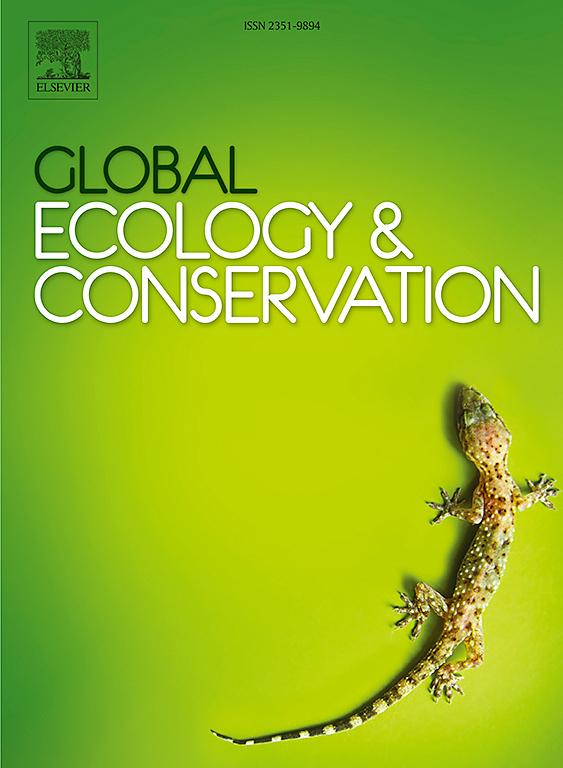Conservation’s green illusion: Nitrogen thresholds as critical determinants of extinction risk in specialist herbivores
IF 3.4
2区 环境科学与生态学
Q1 BIODIVERSITY CONSERVATION
引用次数: 0
Abstract
Despite decades of habitat-based interventions, the red panda (Ailurus fulgens) remains in steep decline across its Himalayan range. Conservation strategies have emphasized forest cover and connectivity yet overlooked a key physiological constraint: the availability of dietary nitrogen. As obligatory bamboo folivores, red pandas depend on leaves with sufficiently high foliar nitrogen to meet metabolic and reproductive demands, though direct experimental evidence is limited. However, bamboo nitrogen content varies dramatically across species, seasons, elevations, and disturbance gradients. This perspective argues that the absence of nitrogen criteria constitutes a critical blind spot in red panda conservation. Sub-threshold habitats can function as ecological traps, silently undermining translocation, reproduction, and survival even in structurally intact forests. We call for a paradigm shift that integrates foliar nitrogen thresholds into conservation science, landscape planning, and reintroduction protocols. We outline research priorities to (1) establish red panda nitrogen requirements through controlled trials, (2) map nitrogen landscapes using NIRS and remote sensing, and (3) embed nutritional adequacy in habitat policy frameworks. Without this integration, conservation efforts risk being structurally sound but nutritionally void.
保护的绿色错觉:氮阈值是特殊食草动物灭绝风险的关键决定因素
尽管几十年来基于栖息地的干预措施,小熊猫(Ailurus fulgens)在喜马拉雅山脉的数量仍然急剧下降。保护策略强调森林覆盖和连通性,却忽视了一个关键的生理限制:膳食氮的可用性。小熊猫是竹叶的强制性食叶动物,虽然直接的实验证据有限,但小熊猫依赖叶面氮含量足够高的叶子来满足代谢和繁殖需求。竹材氮含量在不同种类、不同季节、不同海拔、不同扰动梯度上存在显著差异。这一观点认为,氮标准的缺失构成了小熊猫保护的一个关键盲点。亚阈值栖息地可以作为生态陷阱,即使在结构完整的森林中,也会默默地破坏易位、繁殖和生存。我们呼吁将叶面氮阈值整合到保护科学、景观规划和重新引入协议中。我们概述了研究重点:(1)通过对照试验确定小熊猫对氮的需求;(2)利用近红外光谱和遥感绘制氮景观;(3)将营养充足性纳入栖息地政策框架。如果没有这种整合,保护工作可能在结构上是合理的,但在营养上是无效的。
本文章由计算机程序翻译,如有差异,请以英文原文为准。
求助全文
约1分钟内获得全文
求助全文
来源期刊

Global Ecology and Conservation
Agricultural and Biological Sciences-Ecology, Evolution, Behavior and Systematics
CiteScore
8.10
自引率
5.00%
发文量
346
审稿时长
83 days
期刊介绍:
Global Ecology and Conservation is a peer-reviewed, open-access journal covering all sub-disciplines of ecological and conservation science: from theory to practice, from molecules to ecosystems, from regional to global. The fields covered include: organismal, population, community, and ecosystem ecology; physiological, evolutionary, and behavioral ecology; and conservation science.
 求助内容:
求助内容: 应助结果提醒方式:
应助结果提醒方式:


